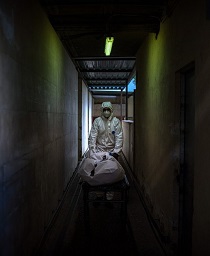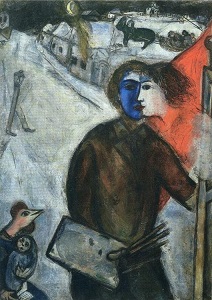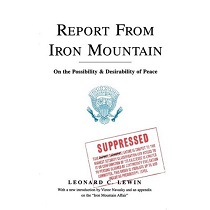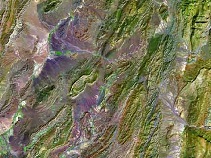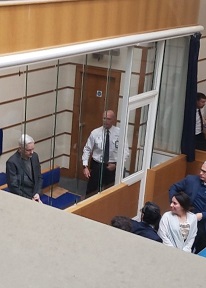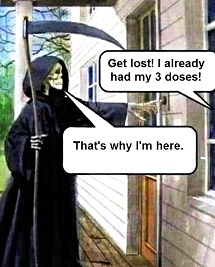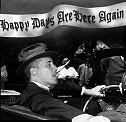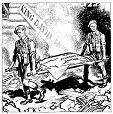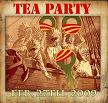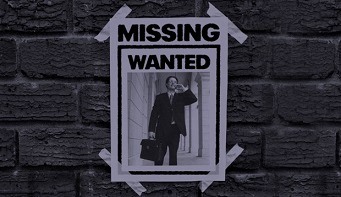Why the Financial and Political System Failed
Nomi Prins
Nomi Prins in the article below addresses the destruction of the market-based Western financial system and its replacement with a casino underwritten by taxpayers.
The recent spike in global political-financial volatility that was temporarily soothed by European Central Bank (ECB) covered bond buying reveals another crack in the six-year-old throw-money-at-the-banks strategies of politicians and central bankers. The premise of using banks as credit portals to transport public funds from the government to citizens is as inefficient as it is not happening. The power elite may exude belabored moans about slow growth and rising inequality in speeches and press releases, but they continue to find ways to provide liquidity, sustenance and comfort to financial institutions, not to populations.
The very fact – that without excessive artificial stimulation or the promise of it – more hell breaks loose – is one that government heads neither admit, nor appear to discuss. But the truth is that the global financial system has already failed. Big banks have been propped up, and their capital bases rejuvenated, by various means of external intervention, not their own business models.
Last week, the Federal Reserve released its latest 2015 stress test scenarios. They don’t even exceed the parameters of what actually took place during the 2008-2009-crisis period. This makes them, though statistically viable, completely irrelevant in an inevitable full-scale meltdown of greater magnitude. This Sunday, the ECB announced that 25 banks failed their tests, none of which were the biggest banks (that received the most help). These tests are the equivalent of SAT exams for which students provide the questions and answers, and a few get thrown under the bus for cheating to make it all look legit.
Regardless of the outcome of the next set of tests, it’s the very need for them that should be examined. If we had a more controllable, stable, accountable and transparent system (let alone one not in constant litigation and crime-committing mode) neither the pretense of well-thought-out stress tests making a difference in crisis preparation, nor the administering of them, would be necessary as a soothing tool. But we don’t. We have an unreformed (legally and morally) international banking system still laden with risk and losses, whose major players control more assets than ever before, with our help.
The biggest banks, and the US and European markets, are now floating on more than $7 trillion of Fed and ECB intervention with little to show for it on the ground and more to come. To put that into perspective – consider that the top 100 global hedge funds manage about $1.5 trillion in assets. The Fed’s book has ballooned to $4.5 trillion and the ECB’s book stands at $2.7 trillion – a figure ECB President, Mario Draghi considers too low. Thus, to sustain the illusion of international systemic health, the Fed and the ECB are each, as well as collectively, larger than the top 100 global hedge funds combined.
Providing ‘liquidity crack’ to the financial system has required heightened international government and central bank coordination to maintain an illusion of stability, but not true stability. The definition of instability is this epic support network. It is more dangerous than in past financial crises precisely because of its size and level of political backing.
During the Panic of 1907, President Teddy Roosevelt’s Treasury Secretary, Cortelyou announced the first US bank bailout in the country’s history. Though not a member of the government, financier J.P. Morgan was chosen by Roosevelt to deploy $25 million from the Treasury. He and a team of associates decided which banks would live or die with this federal money and some private (or customers’) capital thrown in.
The Federal Reserve was established in 1913 to back the private banking system in advance from requiring future such government injections of capital. After World War I, a Laissez Faire policy toward finance and speculation, but not alcohol, marked the 1920s. before the financial system crumbled under the weight of its own recklessness again. So on October 24, 1929, the Big Six bankers convened at the Morgan Bank at noon (for 20 minutes) to form a plan to ‘save’ the ailing markets by injecting their own (well, their customer’s) capital. It didn’t work. What transpired instead was the Great Depression.
After the Crash of 1929, markets rallied, and then lost 90% of their value. Liquidity froze. Credit for the masses was as unavailable, as was real money. The combined will of President FDR and the key bankers of the day worked to bolster people’s confidence in the system that had crushed them – by reforming it, by making the biggest banks smaller, by separating bet-taking arms from those in which people could store, and borrow money from, safely. Political and financial leaderships collaboratively ushered in the reform measures of the Glass-Steagall Act. As I note in my most recent book, All the Presidents’ Bankers, this Act was not merely a piece of legislation passed in spirited bi-partisan fashion, but it was also a means to stabilize a system for participants at the top, middle and bottom of it. Stability itself was the political and financial goal.
Through World War II, the Cold War, and Vietnam, and until the dissolution of the gold standard, the financial system remained fairly stable, with banks handling their own risks, which were separate from the funds of citizens. No capital injections or bailouts were required until the mid-1970s Penn Central debacle. But with the bailout floodgates reopened, big banks launched a frenzied drive for Middle East petro-dollar profits to use as capital for a hot new area of speculation, Third World loans.
By the 1980s, the Latin American Debt crisis resulted, and with it, the magnitude of federally backed bank bailouts based on Washington alliances, ballooned. When the 1994 Mexican Peso Crisis hit, bank losses were ‘handled’ by President Clinton’s Treasury Secretary (and former Goldman Sachs co-CEO) Robert Rubin and his Asst. Treasury Secretary, Larry Summers via congressionally approved aid.
Afterwards, the repeal of the Glass Steagall Act, the mega-merging of financial players, the explosion of the derivatives market, and the rise of global ‘competition’ amongst government supported gambling firms, lead to increase speculative complexity and instability, and the recent and ongoing 2008 financial crisis.
By its actions, the US government (under both political parties) has chosen to embrace volatility rather than stability from a policy perspective, and has convinced governments in Europe to follow suit. Too big to fail has been replaced by bigger than ever.
Today, the Big Six US banks are mostly incarnations of the Big Six banks in 1929 with a few add-ons due to political relationships (notably that of Goldman Sachs, whose past partner, Sidney Weinberg struck up lasting relationships with FDR and other presidents.)
We no longer have a private financial system responsible for its own risk, regardless of how it’s computed or supervised. We have a system whose risk is shouldered by the federal government and its central bank entities, and therefore, the people whose deposits seed that risk and whose taxes and futures sustain it.
We have a private financial system that routinely commits financial crimes against humanity with miniscule punishments, as approved by the government. We don’t even have a free market system based on the impossible notion of full transparency and opportunity, we have a publicly funded betting arena, where the largest players are the most politically connected and the most powerful politicians are enablers, contributors and supporters. We talk about wealth inequality but not this substantial power inequality that generates it.
Today, neither the leadership in Washington, nor throughout Europe, has the foresight to consider what kind of real stress would happen when zero and negative interest rate and bond-buying policies truly run their course and wreak further havoc on their respective economies, because the very banks supported by them, will crush people, now in a weaker economic condition, more horrifically than before.
The political system that stumbles to sustain the illusion that economies can be built on rampant financial instability, has also failed us. Past presidents talked of a square deal, a new deal and a fair deal. It’s high time for a stability deal that prioritizes the real financial health of individuals over the false one of financial institutions.
_________________________________________________________________________________________
Source: Nomi Prins via Paul Craig Roberts. Image: © N/A
URL: http://www.a-w-i-p.com/index.php/2014/11/04/why-the-financial-and-political

